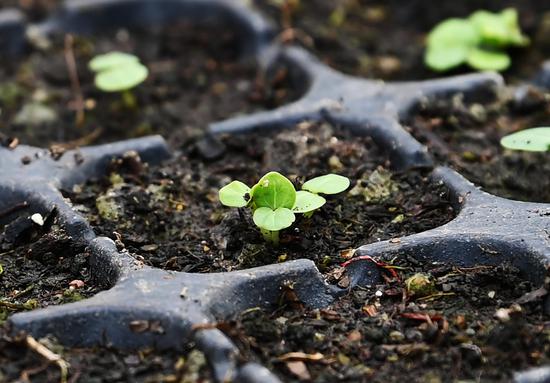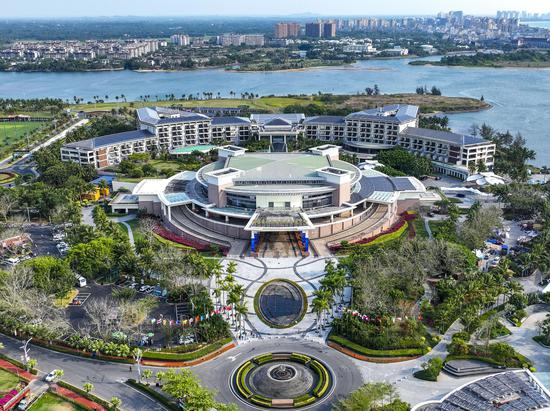IV. Worsening Subsistence Crisis among U.S. Underclass
The nation sees widening wealth gap, worsening living conditions for low-income groups, increasing homeless people, life-threatening drug abuse, and dropping average life expectancy. U.S. underclass is facing a severe survival crisis.
Wealth gap has further widened. The United States is a poor society with many super riches. Through an in-depth analysis of the U.S. society, the New Class Society: Goodbye American Dream?, demonstrates the wide range of inequalities based on class, gender and race in the United States. Co-authored by Earl Wysong, professor of sociology at Indiana University Kokomo, Robert Perrucci, professor of sociology at Purdue University, and David Wright, professor of sociology at Wichita State University, the fourth edition of this book shows that a new polarized double-diamond social structure has emerged, featuring a privileged class, consisting of the top 20 percent of the population who are wealthy, and a new working class, consisting of 80 percent of the population who live at the bottom of society and are getting increasingly poor and unstable. According to data published by Statista Research Department, Sept. 30, 2022, the Gini coefficient in the United States rose to a record high of 0.49 in 2021, as the poverty rate rose for the second year in a row with 37.9 million people living in poverty. The U.S. Federal Reserve statistics show that the total wealth of the richest 1 percent of the U.S. population reached a record 45.9 trillion U.S. dollars at the end of the fourth quarter of 2021 and their fortunes have increased by more than 12 trillion dollars, or more than a third, during the COVID-19 pandemic. Of the approximately 1.7 trillion dollars in excess savings held by American families as of mid-2022, about 1.35 trillion dollars was held by the top half of earners, while just 350 billion dollars by the bottom half.
Inflation continues to hurt low-income households. While U.S. residents' savings have run down, necessities like car repair, food and housing become sharply more expensive, The New York Times reported on Nov. 25, 2022. At the same time, prices climbed 7.7 percent in the year through October, having the most severe negative impact on low-income groups. Lael Brainard, a governor of the Federal Reserve, said that low-income households spend 77 percent of their income on necessities, compared to only 31 percent by higher-income households. An analysis released by National Energy Assistance Directors Association on April 12, 2022, showed that for low and moderate income families, which make up the bottom 40 percent of households in the U.S. society, sharp rises in energy prices would force many of them out of basic goods and services due to extra energy bills.
The homeless has dramatically increased. According to the 2022 Annual Homelessness Assessment Report released by the U.S. Department of Housing and Urban Development, over 580,000 Americans experienced homeless on a single night in 2022, with 40 percent of them living in unsheltered locations such as on the street, in abandoned buildings, or in other places not suitable for human habitation. Over the past three years, the number of people of no fixed abode increased by at least 22,500 to 173,800 in California. However, the state only provides about 5,000 beds for the homeless, down from a maximum of more than 16,000 rooms in August 2020, according to the state Department of Social Services. The Los Angeles Times reported on December 21, 2022, that the number of the homeless in Long Beach, California, increased dramatically by 62 percent from that of 2020, including 1,282 chronically homeless people with disabilities.
According to a research published in the California Law Review by Sara K. Rankin, a professor at School of Law of Seattle University and the founder and director of the Homeless Rights Advocacy Project, homeless people in the United States are usually the "marginalized groups, such as refugees, people of color, and poor people" who are subjected to persecution, detention, incarceration, or segregation that prevents them from integrating into their communities. This exposes the systemic discrimination that exists in the United States.
Average life expectancy has significantly declined. A report released by the U.S. Centers for Disease Control and Prevention's National Center for Health Statistics in August 2022 showed that U.S. life expectancy fell by a total of 2.7 years between 2019 and 2021 to 76.1 years, the lowest it has been since 1996. Non-Hispanic Native American and Alaska Native peoples saw the biggest decline -- a staggering 6.6 years. Dramatic declines in life expectancy are rare in peacetime. Data released by the U.S. Centers for Disease Control and Prevention show that, as of Dec. 29, 2022, the United States reported more than 1.08 million COVID-19 deaths, including more than 260,000 in 2022. While U.S. politicians are tight-lipped about the country's average life expectancy, it is probably the most important measure in assessing how good life is in a country and even, to some extent, how great a country is, reported German newspaper Die Welt on Jan. 15, 2023. In addition to the COVID-19 pandemic, the causes of the dramatic decline in life expectancy in the United States include drug abuse, gun violence and etc. According to a joint study published in the British Medical Journal by scholars from Virginia Commonwealth University, University of Colorado Boulder, and Urban Institute, the deteriorating health situation, high mortality rates and continued injustice against minorities in the United States are largely the product of long-term policy choices and systemic racism. The mass mortality of COVID-19 reflects not only inappropriate U.S. policy choices in response to the pandemic, but also the deep-rooted causes of the deteriorating health situation in the United States over the past decades.
The U.S. government actively promotes the legalization of marijuana regardless of people's health. Marijuana is a controlled narcotic drug by the UN International Drug Control Conventions. In the 1970s, the United States promulgated the Controlled Substances Act (CSA), which classified marijuana as a federally controlled substance. The federal and state governments of the United States have failed to regulate drugs and substance abuse and even pushed for the legalization of marijuana under the influence of lobbyists groups, resulting in more and more young people becoming victims. In their book Can Legal Weed Win? The Blunt Realities of Cannabis Economics published in 2022, Robin Goldstein and Daniel Sumner, researchers with the University of California, Davis, underlined that one of the pipe dreams behind the legalization push is the intention to make legal cannabis a new cash cow for the government through tax. Marijuana sales in the United States have exceeded 30 billion dollars so far, and the U.S. marijuana market is expected to reach 65 billion dollars by 2030. According to the data released by Open Secrets, from 2018 to 2021, some marijuana and products-related enterprises and trade associations in the United States spent more than 16.6 million dollars on political lobbying, with an average annual expenditure of about 10 times that of 2016; In the first three quarters of 2022, more than 5.6 million dollars were spent on marijuana lobbying. Enterprises and organizations profiting from marijuana trade money for power, and form interest groups with politicians, thereby letting drugs and substance abuse going unchecked, a striking demonstration of Washington's failure in social governance.
Drugs and substance abuse endanger life and health. According to a survey released by U.S. Substance Abuse and Mental Health Services Administration, 59.3 million Americans over 12 years of age abused drugs in 2020, of which 49.6 million smoked marijuana. According to public information on the U.S. Centers for Disease Control and Prevention (CDC), nearly 40 percent of American high school students use marijuana for a long time. According to a report released by the U.S. National Institutes of Health in August 2022, 43 percent of young Americans have smoked marijuana in a year, 8 percent have used hallucinogens, and 11 percent have smoked marijuana every day, the highest level in record. According to a study released by the Manhattan Institute for Policy Studies on August 4, 2022, the number of Americans dying from drugs and drug abuse has increased dramatically in recent years, by more than 100,000 per year. More than 107,000 cases involving deaths from drug overdose occurred in the 12-month period ending in August 2022, according to data from the U.S. CDC. Marta Sokolowska, the Deputy Center Director for Substance Use and Behavioral Health in FDA's Center for Drug Evaluation and Research, pointed out that drug abuse has become one of the most devastating public health crises in the United States.
The absence of governance endangers environmental rights. The American Broadcasting Company reported on June 21, 2022, that in Louisiana, a large amount of industrial waste has led to many "cancer alleys" along the Mississippi River, which has a 95-percent higher risk of cancer due to air pollution than the rest of the country. The Chicago Tribune reported on July 13, 2022, that at least one per- and poly-fluoroalkyl substance, known as forever chemicals, that may be harmful to health was detected in the drinking water of more than 8 million residents in Illinois, accounting for about 60 percent of the local population. In the context of the deteriorating environmental situation, the United States Supreme Court ruled in June 2022 that the Environmental Protection Agency had no right to regulate carbon emissions without authorization from Congress, nor could it require power plants to switch from fossil fuels to renewable energy. Stephane Dujarric, a spokesperson for the United Nations, pointed out that the ruling of the Supreme Court of the United States was "a setback in our fight against climate change."


















































 京公网安备 11010202009201号
京公网安备 11010202009201号